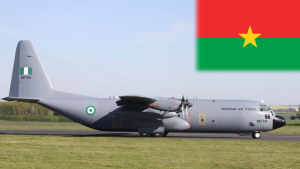The B-2 Spirit, a cornerstone of modern aerial warfare, is a stealth bomber designed to penetrate the most advanced anti-aircraft defences undetected. Its ability to deliver strategic strikes across vast distances while evading radar and infrared detection systems makes it a formidable asset. Central to its prowess are the four General Electric F118-GE-100 turbofan engines, which power the aircraft with a blend of efficiency, performance, and stealth. This article explores the B-2’s engineering, focusing on its engines and their role in its operational success.
The B-2 Spirit is equipped with four General Electric F118-GE-100 turbofan engines, each producing approximately 17,300 pounds of thrust. Unlike traditional afterburning engines, these non-afterburning turbofans are designed to minimise the aircraft’s infrared signature, a critical factor in evading infrared-guided missiles and detection systems. By forgoing afterburners, the engines reduce heat output, enhancing the B-2’s ability to operate covertly in hostile environments.
The F118-GE-100 engines are optimised for both performance and stealth, delivering the power needed for long-range missions while maintaining a low observable profile. Their design reflects a careful balance between thrust output and the need to remain undetected, making them a key component of the B-2’s operational effectiveness.
The B-2’s engines are seamlessly integrated into its airframe to preserve its stealth characteristics. Unlike conventional aircraft, where engines are often mounted externally, the F118-GE-100 engines are embedded within the B-2’s wing structure. This placement maintains the aircraft’s flat, radar-evading profile, reducing its radar cross-section (RCS) and making it harder for enemy radar systems to detect.
The engine intakes and exhausts are meticulously designed to further enhance stealth. The intakes are shaped and positioned to minimise radar reflections, while the exhaust is channelled through slots over the aircraft’s tail. This configuration allows the exhaust gases to cool before exiting, significantly reducing the B-2’s heat signature and its vulnerability to heat-seeking missiles. By combining these features, the B-2 achieves a low observable status that is critical for penetrating heavily defended airspace.
The F118-GE-100 engines enable the B-2 Spirit to achieve an impressive unrefueled range of approximately 6,900 miles (11,000 kilometres). With aerial refueling, this range can be extended, allowing the B-2 to conduct global missions without the need for forward bases. This capability is vital for strategic bombing missions, where the aircraft may need to strike targets deep within enemy territory.
Fuel efficiency is another critical aspect of the F118 engines, though specific consumption rates remain classified. The engines are designed to provide the necessary power for long-range missions while optimising fuel use, ensuring the B-2 can loiter or travel extended distances without frequent refueling. This balance of power and efficiency underpins the B-2’s ability to execute complex missions with precision and reliability.
The General Electric F118-GE-100 engines are integral to the B-2 Spirit’s role as a stealth bomber. Their low infrared signature and integration into the airframe allow the aircraft to evade advanced detection systems, while their thrust and efficiency enable long-range operations. Whether delivering conventional or nuclear payloads, the B-2 relies on its engines to penetrate enemy defences, strike high-value targets, and return safely.
The synergy between the engines and the B-2’s stealth design ensures that it remains one of the most advanced and capable bombers in the world. From its radar-evading profile to its extended range, the B-2 Spirit exemplifies how cutting-edge engineering can create a platform that dominates modern warfare.
The B-2 Spirit stealth bomber, powered by its four General Electric F118-GE-100 turbofan engines, represents the pinnacle of stealth and strategic bombing technology. Its engines, with their non-afterburning design, integrated placement, and fuel-efficient performance, enable the B-2 to execute missions that few other aircraft can match. As air defence systems continue to evolve, the B-2’s ability to remain undetected and deliver precise strikes ensures its continued relevance in an ever-changing global security landscape.






